SERIES BY FEDERICO BABINA REPRESENTS CINEMA'S ICONIC WORKS OF ARCHITECTURE
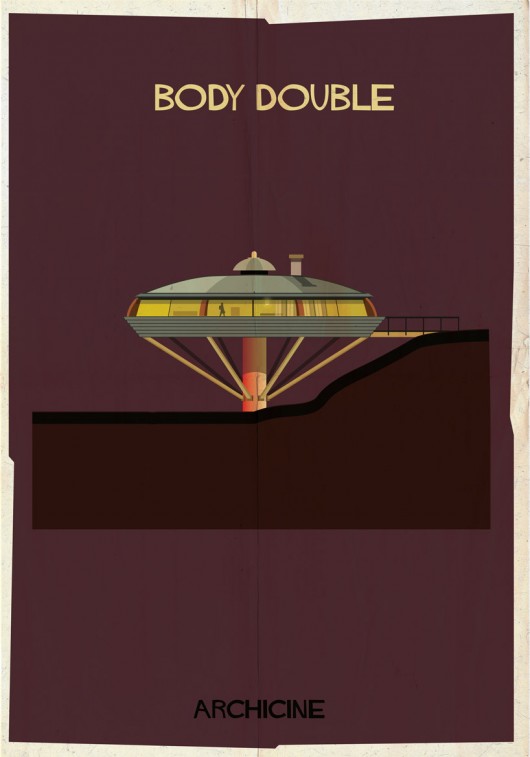
 Hello and welcome to the unofficial Brian De Palma website. Here is the latest news: |
|---|
E-mail
Geoffsongs@aol.com
-------------
Recent Headlines
a la Mod:
Listen to
Donaggio's full score
for Domino online
De Palma/Lehman
rapport at work
in Snakes
De Palma/Lehman
next novel is Terry
De Palma developing
Catch And Kill,
"a horror movie
based on real things
that have happened
in the news"
Supercut video
of De Palma's films
edited by Carl Rodrigue
Washington Post
review of Keesey book
-------------
Exclusive Passion
Interviews:
Brian De Palma
Karoline Herfurth
Leila Rozario
------------
------------
| « | November 2013 | » | ||||
| S | M | T | W | T | F | S |
| 1 | 2 | |||||
| 3 | 4 | 5 | 6 | 7 | 8 | 9 |
| 10 | 11 | 12 | 13 | 14 | 15 | 16 |
| 17 | 18 | 19 | 20 | 21 | 22 | 23 |
| 24 | 25 | 26 | 27 | 28 | 29 | 30 |
De Palma interviewed
in Paris 2002
De Palma discusses
The Black Dahlia 2006

Enthusiasms...
Alfred Hitchcock
The Master Of Suspense
Sergio Leone
and the Infield
Fly Rule
The Filmmaker Who
Came In From The Cold
Jim Emerson on
Greetings & Hi, Mom!
Scarface: Make Way
For The Bad Guy
Deborah Shelton
Official Web Site
Welcome to the
Offices of Death Records
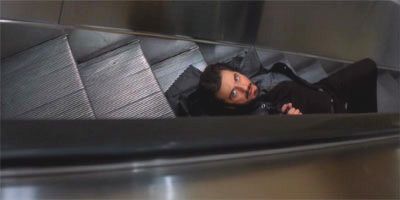 Moviehole's Colin Moore bids a happy 20th anniversary to Brian De Palma's Carlito's Way, finding "too much to like" to put up a fight when dubbing it among the best films of the 1990s. "Pacino is electric in the title role," writes Moore, "strutting the streets of New York in a knee-length leather coat, playing it cool, politely turning down illicit job offers; one of his most sympathetic roles to date." Here's an excerpt from Moore's article:
Moviehole's Colin Moore bids a happy 20th anniversary to Brian De Palma's Carlito's Way, finding "too much to like" to put up a fight when dubbing it among the best films of the 1990s. "Pacino is electric in the title role," writes Moore, "strutting the streets of New York in a knee-length leather coat, playing it cool, politely turning down illicit job offers; one of his most sympathetic roles to date." Here's an excerpt from Moore's article:“I don’t know, maybe there’s a mis-fuckin’ understanding here, I don’t know man. Maybe you don’t remember me. My name is Benny Blanco…”
“Maybe I don’t give a shit. Maybe I don’t remember the last time I blew my nose either.”
I chuckle at those moments but the language feels real, has slang and street color that’s both dangerous and funny. No surprise at their mixed effectiveness given that writer [Edwin] Torres walked those streets, he lived them, and channelled through screenwriter David Koepp (“Panic Room”) the dialogue seems honest. Nothing as iconic as, “Say hello to my little friend!” but “Here come da pain!” has a special place in many hearts, I’m sure. The cast is solid. From the majors to supporting players Viggo Mortensen and Luiz Guzmán as Pachanga, there’s not a loose brick in the wall. Leguizamo plays Benny like a knife with a slimy handle; if he can’t schmooze you with one end, he’ll stick you with the other. [Sean] Penn, not surprisingly, is a wonder as Kleinfeld, nothing less than mutated into the frizzy haired, deliciously corrupted lawyer that earned him Golden Globe and Chicago Film Critics Association acting nominations. Of course, in the hands of Brian De Palma, presentation is personality.
Like Spielberg and his often-assumed mentor, Hitchcock, the New Jersey born director De Palma (“Sisters,” “Mission Impossible”) is known for his visual style. Canted angles, 360-degree pans, extended takes ~ they’re ever present in “Carlito’s Way,” along with an Odessa Steps sequence that rivals his “Potemkin” shootout in “The Untouchables,” this time on the escalators of Grand Central Station. It’s here, in the club, and in the excellent (kick ass) pool-hall scene that you know exactly who is calling the shots. De Palma has a singular stamp. Given his earlier Pacino vehicle, “Scarface,” the director no doubt has experience delivering this world, of mansions and period style, of lives fueled by booze, drugs, narcissism and dreams. His technique is immersive and operatic, completely suited for these bold characters.
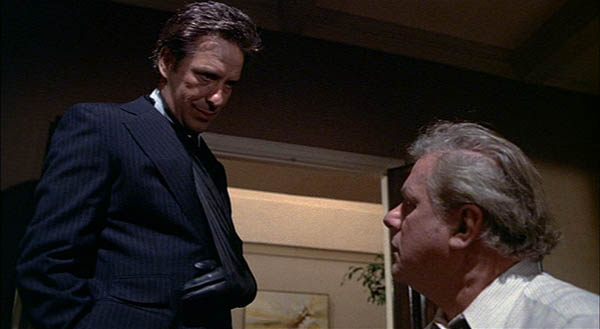
The release was well reviewed, with the restoration and preservation expert Robert A. Harris (who oversaw, among many other projects, a new rendition of Francis Ford Coppola’s “Godfather” films) praising “color, shadow detail, resolution.” Mr. Harris, writing on Home Theater Forum, a tech-savvy and often argumentative site, noted, in the argot common in such forums: “The grain structure is totally filmlike. So much so that when we hit a long dupe shot,” viewers “can easily see the difference.”
And there, for some viewers of the Twilight Time “Fury,” was the rub. De Palma is a technical virtuoso and “The Fury” one of his most bravura works. He and the director of photography, Richard H. Kline, pulled out the stops with focus manipulations, cleverly orchestrated effects and rear-projection work. Composite, or dupe, shots are put together in a lab, combining materials shot under different conditions. Merging and rerendering these elements creates an inevitable downgrade from the quality of the original camera work; that’s what experts mean when they say a particular shot looks “dupey.”
In the first half-hour of “The Fury,” there’s a car chase in which Cassavetes’s sinister C.I.A. officer pursues an on-the-run Douglas, who hijacks a police car. It’s a night scene, shot in low light, with a number of composite shots. To top it off, the climax of the scene takes place on a foggy pier. “That scene in particular, and some other night scenes, always looked a bit problematic to me, especially compared to the surrounding day shots,” said James White, a freelance DVD producer who lives and works in Britain. “They really suffered, on account of the ‘pushing’ of the film stock, the heavy noise-to-grain ratio, the process shots. None of it really fit in well with the rest of the picture.”
Mr. White was part of the team at Arrow Video, a British genre and cinephile DVD/Blu-ray label, working on a version of “The Fury” for British distribution. In tandem with the French label Carlotta and the Australian concern Shock, the company financed an entirely new high-definition transfer, using advanced film-scanning technology, and the movie’s original negative (which includes the shots put together from different sources in the lab) for the picture source.
“When people say that the Twilight Time Blu-ray looked the way they remembered it in theaters, well, it probably did,” Mr. White said. “Because, to my eye, the version on that master looked like an inter-negative, the source from which 35-millimeter prints were actually struck for distribution. Using the camera negative, you’re offered so much more in terms of contrast, color and detail.”
And it’s true, the night scenes in the Arrow “Fury” have a smoother, less garish look than those on the nonetheless very watchable Twilight Time release. These two versions of “The Fury” caused some controversy among buffs in the Home Theater Forum thread following Mr. Harris’s review, and elsewhere. Many home theater mavens own region-free Blu-ray players that defeat the blocking technology meant to keep foreign-made DVDs unplayable in the United States and vice versa. For them, comparing the two versions was easy. Mr. White, for his part, said that in the online world of Blu-ray assessment, “people play favorites, and it gets out of hand.”
As it happens, Twilight Time has been subject to a lot of criticism over its limited-edition business model, which the label’s co-founder, Nick Redman, calls a “clean” model that satisfies studios licensing the product and in a sense guarantees the ability to put out more obscure material.
“The critics of our limited-edition model think that we’re somehow artificially depriving all the millions of people that would really want a copy of a given movie from having it,” Mr. Redman said. “In fact, an edition of 3,000 is completely in line with what 99 percent of all catalog releases will sell. The other thing we’re criticized for is our price point, which is $29.95 — completely in line with every other label, including Olive and Criterion, but because we are available at only one retailer (although now there are some copies available at TCM), we can’t participate in the discount deals that other labels that go through Amazon and the big-box retail stores can do.”
These sticking points, Mr. Redman said, might have contributed to the bad blood over “The Fury.” The label’s edition is, even so, a success, as it’s sold out. The Arrow “Fury” remains available, although you need a region-free player to watch it. While Mr. Redman stands by the Twilight Time edition of “The Fury,” he allows that he’s learned something from the kerfuffle: “Had we known that Arrow and Carlotta were planning to create a new master, we might have gone in on it with them. But we didn’t know.”
Mr. Redman said he now believes that better communication between international DVD and Blu-ray producers is essential to the survival of the formats. “As the studios back further and further away — and people are dreaming if they think the studios are not backing further and further away — from physical media,” he said, “it is going to totally default to the independent labels in each territory in the world to synergize and work together as best they can to make those libraries viable for those handful of people left who want them on disc.”
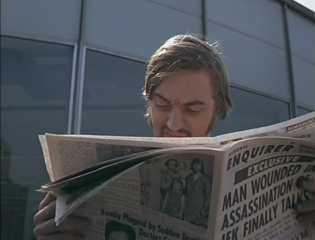 Friday marks the 50th anniversary of the JFK assassination. There has been a proliferation of TV specials, magazines, and online articles looking back and examining that weekend of shocking events and images in November 1963. And tonight, Oliver Stone will present a screening of his director's cut of JFK at the St. Louis International Film Festival.
Friday marks the 50th anniversary of the JFK assassination. There has been a proliferation of TV specials, magazines, and online articles looking back and examining that weekend of shocking events and images in November 1963. And tonight, Oliver Stone will present a screening of his director's cut of JFK at the St. Louis International Film Festival.The Telegraph's Anne Billson argues that "in the 50 years since John F Kennedy's assassination, the event has been so endlessly repeated on film that it has almost lost its meaning." Billson includes De Palma along with Andy Warhol and John Waters as "early adopters" of JFK iconography on film:
One of the first artists to co-opt JFK iconography was Andy Warhol, whose Sixteen Jackies depicted serial images of the widowed Jacqueline Kennedy; he also cast some of his The Factory regulars in a never-completed film called Since (1966), a stylised recreation of the assassination in which Gerard Malanga shot Mary Woronov with a banana. "It didn't bother me that much that he was dead," Warhol said. "What bothered me was the way the television and radio were programming everybody to feel so sad. It seemed like no matter how hard you tried, you couldn't get away from the thing."
Other early adopters include John Waters, who in 1968 restaged the assassination in his parents' backyard for a 16mm short called Eat Your Makeup, in which Jackie was played by Divine, and Brian De Palma, whose second film, Greetings (1968), satirised JFK conspiracy theorists before most of us were even aware they existed.
Francis Ford Coppola's The Conversation (1974) and Brian De Palma's Blow Out (1981) picked up the theme of technology inadvertently detecting a crime. In both cases, a sound recording finds evidence of a murder, actions that, when discovered by the murderer, put a bull's eye on the sound recorder, too.
The climax of The Godfather (1972), in which Michael Corleone attends the church baptism of his nephew while his enemies are being executed around the country, has striking similarities to images on TV screens during the morning of Nov. 24, 1963. Mr. Coppola's cross-cutting is not unlike what many American families saw that Sunday when religious proceedings were interrupted by the shocking sight of Oswald being gunned down by Ruby.
A classic exchange late in The Godfather: Part II (1974) between Michael and Tom Hagen, the Corleones' lawyer, unmistakably connects Kennedy's death to Oswald's.
As Michael calls for the execution of Hyman Roth, their crafty rival who is being deported back to the U.S., Tom objects that such a plan has no chance of succeeding.
"It's like trying to kill the president," he says. "There's no way we can get to him."
"Tom, you know you surprise me," answers Michael with chilly authority.
"If anything in this life is certain, if history has taught us anything, it's that you can kill anyone."
Mr. Coppola confirms this cynical truth by directing the assassination of Roth to resemble the shooting of Oswald. As Roth speaks to the press after landing at Miami airport, Corleone henchman Rocco Lampone, posing as a reporter with notebook in hand, pulls out his gun and kills Roth, before being shot himself by police.
South Park once claimed it took 22.3 years for terrible things (in their case, AIDS) to be funny. But it only took five years for no-budget filmmaker John Waters to, in his first film, recreate the assassination in his parents’ backyard, complete with Divine as Jacqueline Kennedy.
Greetings (1968)
1968 was also the year it started being funny to mock JFK conspiracy theorists. Brian De Palma’s first of two episodic comedies with a young (and then mustachioed) Robert De Niro features a guy (Gerrit Graham) who bores people with his claims of a massive coverup.
 Emily Mortimer, who has already been cast as the lead in Brian De Palma's upcoming Therese Raquin project, revealed Monday that she auditioned for De Palma's The Black Dahlia about ten years ago. According to Page Six's Emily Smith, Mortimer attended Monday's Artios Awards in New York, where she told the story of her most embarrassing audition. From Smith's column:
Emily Mortimer, who has already been cast as the lead in Brian De Palma's upcoming Therese Raquin project, revealed Monday that she auditioned for De Palma's The Black Dahlia about ten years ago. According to Page Six's Emily Smith, Mortimer attended Monday's Artios Awards in New York, where she told the story of her most embarrassing audition. From Smith's column:
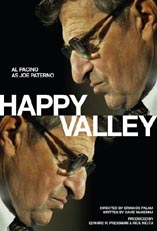 Onward State's Jessica Tully got an update on Happy Valley from screenwriter David McKenna, who told her the film, which will be about the life of Joe Paterno (of which the Jerry Sandusky scandal will be a tragic part), is still in the research stage. McKenna visited State College back in February for initial research, and he tells Tully that he and others working on the project plan to go back there again closer to the start of production.
Onward State's Jessica Tully got an update on Happy Valley from screenwriter David McKenna, who told her the film, which will be about the life of Joe Paterno (of which the Jerry Sandusky scandal will be a tragic part), is still in the research stage. McKenna visited State College back in February for initial research, and he tells Tully that he and others working on the project plan to go back there again closer to the start of production.McKenna, who as a child had greatly admired Paterno, tells Tully, "This project is too important not to be as well informed as possible. Not unexpectedly, what I’ve found is there’s three sides to every story. There is no black and white. JoePa was a great, great man, who did so much good for a such a long period of time. But that greatness turned out to hurt him in the end because he set the bar so incredibly high in everything that he did. And that’s where the tragedy lies."
Here are the last few paragraphs of Tully's article:
While he said he couldn’t talk specifically about what will be included in the film, McKenna said “the crazy thing” about Sandusky is how much good he did for kids. McKenna acknowledges he might be “crucified” for saying that, but he believes it’s the truth.
“Second Mile was a huge endeavor that raised hundreds of millions for disadvantaged kids,” McKenna said. “That’s what makes this scandal so sad and heartbreaking.”
On the other hand, McKenna said he hopes he will be able to talk extensively with the Paterno family. He believes the family will one day open themselves up to him and his Hollywood team, “once they see how fair we’ve been to Joe’s incredible legacy.”
McKenna said he will always have the highest respect for Paterno and his wife, Sue. One quote that McKenna often thinks about is when Paterno, who raised five kids in a modest home a few blocks from campus, told his children they can swim just as well in the community pool as a private one.
“They were on a first-name basis with everyone in town — Joe even knew the cheerleaders’ names. They built a library — giving $3 million of their own money,” McKenna said. “Their love and generosity inspires me as I raise my three children. Because that’s what life is all about, isn’t it?”
 Neil Mitchell has written a new book about Brian De Palma's Carrie, as part of the "Devil's Advocates" series from Auteur Publishing. The book was released in the U.K. last month, and should be available in the U.S. early next year. BN1's Chris Sadler posted an interview with Mitchell last week. Here are some excerpts:
Neil Mitchell has written a new book about Brian De Palma's Carrie, as part of the "Devil's Advocates" series from Auteur Publishing. The book was released in the U.K. last month, and should be available in the U.S. early next year. BN1's Chris Sadler posted an interview with Mitchell last week. Here are some excerpts:Mitchell: I think it’s the fact that nobody is left unscarred by what unfolds; they are either killed or, in Sue Snell’s case, left psychologically disturbed. That’s pretty unforgiving – young and old, intimately involved or a bystander, antagonistic or well meaning, they all pay a heavy price for the cruelty dished out to Carrie White.
Sadler: In the introduction to your book you touch upon your overriding sense of sadness for the character’s isolation. It’s a key element of the film, which I totally understand. Carrie, played brilliantly by Sissy Spacek, is a character that we have a lot of sympathy for, isn’t she?
Mitchell: We do, it’s a canny trick De Palma and Spacek pulled off. In the novel, King makes her a lot less sympathetic. In the movie, however, most of us will either relate to or empathise with Carrie. We all have either been Carrie at some point or known a Carrie – male or female – the runt of the class, always the punchline, forever the outsider. If we’re honest, most of us will also have probably joined in with ridiculing those figures as well. Of course, the most complex part of our relating to or sympathising with Carrie is that she goes on to massacre everyone, leaving us repulsed by her as well...
Sadler: How would you describe the director, Brian De Palma’s style, particularly for Carrie? Of course, he’s known for a split-screen technique, which was used rather effectively in this film.
Mitchell: It’s funny, I think the split-screen sequence in Carrie is effective too, De Palma, on the other hand, has since called it a ‘great mistake’, believing it takes the viewer out of what is happening. He’s a grandiose film-maker, very operatic. Slow motion, split-dioptre shots, canted angles, 360 degree camera movements – he draws attention to the film-making, but always in a way that complements the story in question. He really is a master of creating suspense and tension – visually and aurally – which he does so well in the prom sequence in Carrie. In fact, just about everything you would mark down as being anachronistic about De Palma’s directing style can be seen in that sequence...
Sadler: Describe the process of writing the book. Was it enjoyable and how much of a challenge was it, if at all?
Mitchell: It was hugely enjoyable, and a challenging too. I’ve edited a few film-books but this was my first solo authored project. Research is key, I spent a long time preparing – re-reading the novel, watching the film again, devouring everything I could find that had been written about both and De Palma’s career (there’s a lot), and then amalgamating that into what I personally thought about the film, about what it means to me. John Atkinson, the head honcho of Auteur Publishing, wanted the Devil’s Advocates series to be a mix of the personal and the academic – the format works well in my opinion. Some days I wrote for hours, sometimes I’d stare at the page blankly, I guess that happens to most writers. I’m itching to write another and have a few projects on the horizon.
Sadler: What would you say is the film’s most shocking scene?
Mitchell: It’s a film full of shocking scenes – the ‘plug-it-up’ sequence at the beginning, the prom night massacre and the hand-out-of-the-grave scene at the end – but the one that always gets me is, in comparison, relatively tame, but I find it horrid. It’s when Margaret throws her tea into Carrie’s face, it’s so contemptuous, disrespectful and abrupt. It’s obviously symbolic too: Margaret is literally pouring scorn on her daughter’s desire to go to the prom and be ‘normal’ like the other kids. It’s the banal, pitiful reality of it, who’d want to live a life like that?
 La Furia Umana Paper Issue #4 will feature an extensive collection of essays about the works of Brian De Palma, in a variety of languages. Chris O'Neill is contributing an English language overview. There will be one other overview, and 19 essays covering individual films (three of which appear to be centered on Passion). Included will be Nicole Brenez' "The Impossible, Seriously", previously published at Senses Of Cinema. Thanks to Chris, we have a preview of the complete line-up below:
La Furia Umana Paper Issue #4 will feature an extensive collection of essays about the works of Brian De Palma, in a variety of languages. Chris O'Neill is contributing an English language overview. There will be one other overview, and 19 essays covering individual films (three of which appear to be centered on Passion). Included will be Nicole Brenez' "The Impossible, Seriously", previously published at Senses Of Cinema. Thanks to Chris, we have a preview of the complete line-up below:Didier Truffot / Brian De Palma avec Rudolf Arnheim
Benjamin Léon / L’écran dans l’écran : Notes sur le plan-séquence chez Brian De Palma
Daisuke Akusaka / Farce in slow motion
Eirik Frisvold Hanssen / To look, to respond: vantage points and mixed media in Brian De Palma’s 1960s and 2000s
Raquel Schefer / The Early Politics of Brian De Palma
Alain Hertay / Hi, Mom ! ou les simulacres
Julien Oreste / Two Sisters. Brian De Palma & Douglas Buck
Jessica Felrice / Dread And Time Travel
Covadonga G. Lahera / Efectos personales: la huella de Some Came Running en Blow Out
Carlos Losilla / Naturaleza uerta. A propósito de Dressed to Kill
Fredrik Gustafsson / Body Double
Kim Nicolini / The World Is Yours: Tony Montana’s Paradise Pie in Scarface
Nicole Brenez / L'impossible au sérieux
Sigismondo Domenico Sciortino / Dell'inevitabile e del multimediale
Adrien Clerc / Quand les corps font écrans
Guillaume Rouzaud / Au-delà de la suture
Ricardo Adalia Martín / La cuestión humana. Cinco apuntes sobre Passion
Louis Daubresse / Passion pour le Tout-Image
Toni D'Angela / Il testo im-possibile : Passion
Monica Munoz Marinero / John Litghow, a imagen y semejanza
The issue also has a section of essays about Nicholas Ray's Rebel Without A Cause.